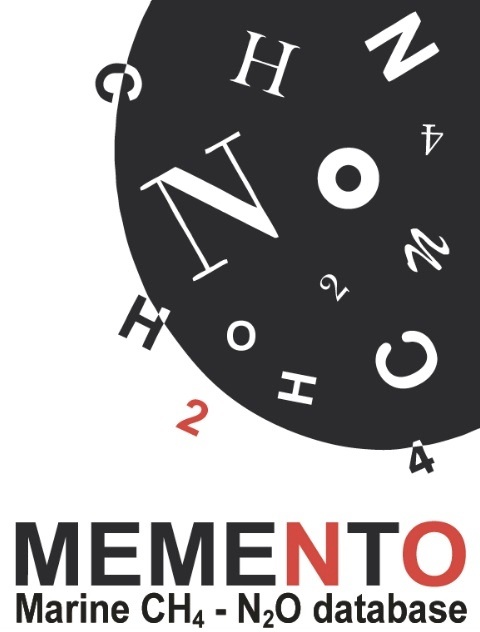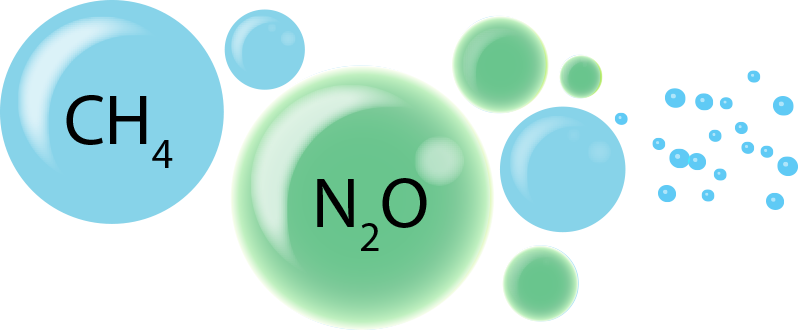Bourbonnais A, Frey C, Sun X, Bristow LA, Jayakumar A, Ostrom NE, Casciotti KL and Ward BB (2021) Protocols for Assessing Transformation Rates of Nitrous Oxide in the Water Column. Front. Mar. Sci. 8:611937. doi: 10.3389/fmars.2021.611937
Abstract: Nitrous oxide (N2O) is a potent greenhouse gas and an ozone destroying substance. Yet, clear step-by-step protocols to measure N2O transformation rates in freshwater and marine environments are still lacking, challenging inter-comparability efforts. Here we present detailed protocols currently used by leading experts in the field to measure water-column N2O production and consumption rates in both marine and other aquatic environments. We present example 15N-tracer incubation experiments in marine environments as well as templates to calculate both N2O production and consumption rates. We discuss important considerations and recommendations regarding (1) precautions to prevent oxygen (O2) contamination during low-oxygen and anoxic incubations, (2) preferred bottles and stoppers, (3) procedures for 15Ntracer addition, and (4) the choice of a fixative. We finally discuss data reporting and archiving. We expect these protocols will make 15N-labeled N2O transformation rate measurements more accessible to the wider community and facilitate future inter-comparison between different laboratories.
SCOR Working Group 143 - Dissolved N2O and CH4 measurements: Working towards a global network of ocean time series measurements of N2O and CH4
Chairs: Herman Bange (Germany) and Sam Wilson (USA)
Other Full Members: Mercedes de la Paz Arándiga (Spain), Laura Farias (Chile), Cliff Law (New Zealand), Wajih Naqvi (India), Gregor Rehder (Germany), Philippe Tortell (Canada), Rob Upstill-Goddard (UK), and Guiling Zhang (China-Beijing)
Associate Members: John Bullister (USA), Jan Kaiser (UK), Annette Kock (Germany), Sunyoung Park (Korea), Andy Rees (UK), and Alyson Santoro (USA)
https://portal.geomar.de/web/scor-wg-143
Bullister, J. L., Wisegarver, D. P., & Wilson, S. T. (2016) The production of Methane and Nitrous Oxide Gas Standards for Scientific Committee on Ocean Research (SCOR) Working Group #143. pp 1 - 9.
 MEMENTO (MarinE MethanE and NiTrous Oxide Marine CH₄ - N₂O) database https://memento.geomar.de/
MEMENTO (MarinE MethanE and NiTrous Oxide Marine CH₄ - N₂O) database https://memento.geomar.de/
Bange, Hermann W., Damian L. Arévalo-Martínez , Mercedes de la Paz , Laura Farías , Jan Kaiser, Annette Kock, Cliff S. Law, Andrew P. Rees, Gregor Rehde, Philippe D.Tortell, Robert C. Upstill-Goddard, Samuel T.Wilson : A Harmonized Nitrous Oxide (N2O) Ocean Observation Network for the 21st Century, Frontiers in Marine Science, 6, 157, https://doi.org/10.3389/fmars.2019.00157, 2019.
Abstract: Nitrous oxide (N2O) is an important atmospheric trace gas involved in tropospheric warming and stratospheric ozone depletion. Estimates of the global ocean contribution to N2O emissions average 21% (range: 10 to 53 %). Ongoing environmental changes such as warming, deoxygenation and acidification are affecting oceanic N2O cycling and emissions to the atmosphere. International activities over the last decades aimed at improving estimates of global N2O emissions, including (i) the MarinE MethanE and NiTrous Oxide database (MEMENTO) for archiving of quality-controlled data, and (ii) a recent large-scale inter-laboratory comparison by Working Group 143 of the Scientific Committee on Ocean Research (SCOR). To reduce uncertainties in oceanic N2O emission estimates and to characterize the spatial and temporal variability in N2O distributions in a changing ocean, we propose the establishment of a harmonized N2O Observation Network (N2O-ON) combining discrete and continuous data from various platforms. The network will integrate observations obtained by calibrated techniques, using time series measurements at fixed stations and repeated hydrographic sections on voluntary observing ships and research vessels. In addition to exploiting existing oceanographic infrastructure, we propose the establishment of central calibration facilities in selected international laboratories to improve accuracy, and ensure standardization and comparability of N2O measurements. Final data products will include a harmonized global N2O concentration and emission field for use in model validation and projections of future oceanic N2O emissions, to inform the global research community and policy makers.
Wilson, S. T., Bange, H. W., Arévalo-Martínez, D. L., Barnes, J., Borges, A. V., Brown, I., Bullister, J. L., Burgos, M., Capelle, D. W., Casso, M., de la Paz, M., Farías, L., Fenwick, L., Ferrón, S., Garcia, G., Glockzin, M., Karl, D. M., Kock, A., Laperriere, S., Law, C. S., Manning, C. C., Marriner, A., Myllykangas, J.-P., Pohlman, J. W., Rees, A. P., Santoro, A. E., Tortell, P. D., Upstill-Goddard, R. C., Wisegarver, D. P., Zhang, G.-L., and Rehder, G.: An intercomparison of oceanic methane and nitrous oxide measurements, Biogeosciences, 15, 5891-5907, https://doi.org/10.5194/bg-15-5891-2018, 2018.
Abstract: Large-scale climatic forcing is impacting oceanic biogeochemical cycles and is expected to influence the water-column distribution of trace gases, including methane and nitrous oxide. Our ability as a scientific community to evaluate changes in the water-column inventories of methane and nitrous oxide depends largely on our capacity to obtain robust and accurate concentration measurements that can be validated across different laboratory groups. This study represents the first formal international intercomparison of oceanic methane and nitrous oxide measurements whereby participating laboratories received batches of seawater samples from the subtropical Pacific Ocean and the Baltic Sea. Additionally, compressed gas standards from the same calibration scale were distributed to the majority of participating laboratories to improve the analytical accuracy of the gas measurements. The computations used by each laboratory to derive the dissolved gas concentrations were also evaluated for inconsistencies (e.g., pressure and temperature corrections, solubility constants). The results from the intercomparison and intercalibration provided invaluable insights into methane and nitrous oxide measurements. It was observed that analyses of seawater samples with the lowest concentrations of methane and nitrous oxide had the lowest precisions. In comparison, while the analytical precision for samples with the highest concentrations of trace gases was better, the variability between the different laboratories was higher: 36 % for methane and 27 % for nitrous oxide. In addition, the comparison of different batches of seawater samples with methane and nitrous oxide concentrations that ranged over an order of magnitude revealed the ramifications of different calibration procedures for each trace gas. Finally, this study builds upon the intercomparison results to develop recommendations for improving oceanic methane and nitrous oxide measurements, with the aim of precluding future analytical discrepancies between laboratories.
Bange, Hermann W., Damian L. Arévalo-Martínez , Mercedes de la Paz , Laura Farías , Jan Kaiser, Annette Kock, Cliff S. Law, Andrew P. Rees, Gregor Rehde, Philippe D.Tortell, Robert C. Upstill-Goddard, Samuel T.Wilson : A Harmonized Nitrous Oxide (N2O) Ocean Observation Network for the 21st Century, Frontiers in Marine Science, 6, 157, https://doi.org/10.3389/fmars.2019.00157, 2019.
Abstract: Nitrous oxide (N2O) is an important atmospheric trace gas involved in tropospheric warming and stratospheric ozone depletion. Estimates of the global ocean contribution to N2O emissions average 21% (range: 10 to 53 %). Ongoing environmental changes such as warming, deoxygenation and acidification are affecting oceanic N2O cycling and emissions to the atmosphere. International activities over the last decades aimed at improving estimates of global N2O emissions, including (i) the MarinE MethanE and NiTrous Oxide database (MEMENTO) for archiving of quality-controlled data, and (ii) a recent large-scale inter-laboratory comparison by Working Group 143 of the Scientific Committee on Ocean Research (SCOR). To reduce uncertainties in oceanic N2O emission estimates and to characterize the spatial and temporal variability in N2O distributions in a changing ocean, we propose the establishment of a harmonized N2O Observation Network (N2O-ON) combining discrete and continuous data from various platforms. The network will integrate observations obtained by calibrated techniques, using time series measurements at fixed stations and repeated hydrographic sections on voluntary observing ships and research vessels. In addition to exploiting existing oceanographic infrastructure, we propose the establishment of central calibration facilities in selected international laboratories to improve accuracy, and ensure standardization and comparability of N2O measurements. Final data products will include a harmonized global N2O concentration and emission field for use in model validation and projections of future oceanic N2O emissions, to inform the global research community and policy makers.
Weber, T., N.A. Wiseman, A. Kock (2019) Global ocean methane emissions dominated by shallow coastal waters. Nature Communications, volume 10, Article number: 4584 https://doi.org/10.1038/s41467-019-12541-7
Abstract: Oceanic emissions represent a highly uncertain term in the natural atmospheric methane (CH4) budget, due to the sparse sampling of dissolved CH4 in the marine environment. Here we overcome this limitation by training machine-learning models to map the surface distribution of methane disequilibrium (ΔCH4). Our approach yields a global diffusive CH4 flux of 2–6TgCH4yr−1 from the ocean to the atmosphere, after propagating uncertainties in ΔCH4 and gas transfer velocity. Combined with constraints on bubble-driven ebullitive fluxes, we place total oceanic CH4 emissions between 6–12TgCH4yr−1, narrowing the range adopted by recent atmospheric budgets (5–25TgCH4yr−1) by a factor of three. The global flux is dominated by shallow near-shore environments, where CH4 released from the seafloor can escape to the atmosphere before oxidation. In the open ocean, our models reveal a significant relationship between ΔCH4 and primary production that is consistent with hypothesized pathways of in situ methane production during organic matter cycling.
